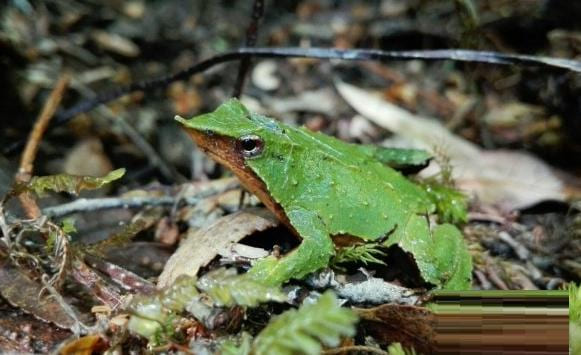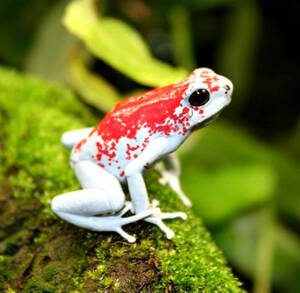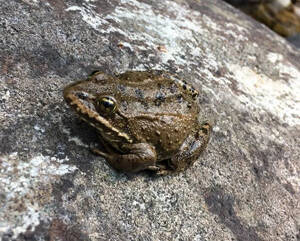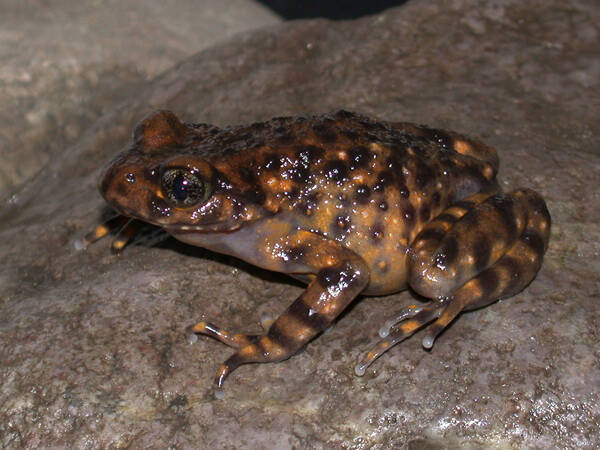Rana luteiventris
IUCN
LCBasic Information
Scientific classification
- name:Rana luteiventris
- Scientific Name:Rana luteiventris ,Columbia spotted frog
- Outline:Anura
- Family:Ranidae Rana
Vital signs
- length:7-8cm
- Weight:50-100g
- lifetime:5-10years
Feature
Green to brown in color with spots on the back
Distribution and Habitat
The Columbia spotted frog is widely distributed in western North America, from Alaska and parts of British Columbia to Washington, Idaho, and parts of Wyoming, Nevada, and Utah. It occurs at elevations from sea level to about 3,000 meters above sea level.
Commonly found along the grassy edges of streams, lakes, ponds, springs, and marshes. May spread into forests, meadows, and shrubs during wet weather. Usually breeds in shallow areas of ponds or other quiet bodies of water.
Appearance
The Columbian Spotted Frog is green to brown in color with spots on its back. The abdomen and upper lip are white. Individuals can be distinguished from other wood frogs by their shorter hind legs, narrow snout, and upturned eyes. Since they spend most of their time in water, their hind feet also have more extensive flippers than similar species.
The Columbian Spotted Frog is a medium-sized frog with a snout that can reach up to 9 cm in length. Its color varies from dark, olive green to light brown, with irregularly shaped black spots on its back and legs. Its skin texture is the same as other frogs in the genus, ranging from rough to smooth, with small skin folds on the back. The color of this frog has a unique feature, with a stripe lighter than the body that runs along the upper lip as a "beard", and the ventral side is usually dyed pink or yellow, but only in adults.
Details
Columbia spotted frog is a species of North American frog.
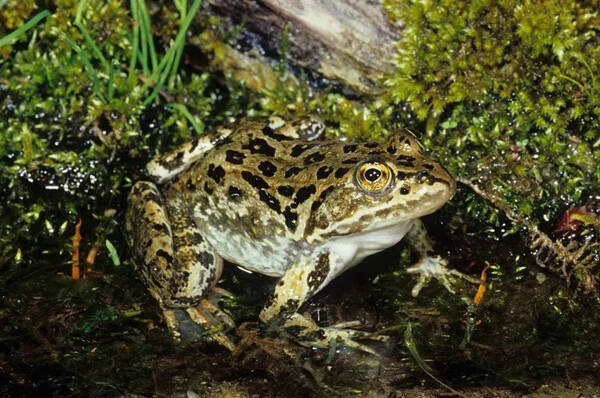
Columbia spotted frog is also known for some of its physical features. It has a long, narrow, upturned eye. Considered a highly aquatic amphibian, the webbed feet extend all the way to the end of its longest toe. When compared to other frogs of the same size, the hind legs tend to be proportionally shorter.
The Columbian Spotted Frog is often eaten by other predators, so they need to hide in an area with abundant vegetation. A large portion of this vegetation is usually aquatic, including many forms of algae and other aquatic plants. The Columbian Spotted Frog will not typically inhabit areas with a lot of grasses and sedges. These plants are not completely aquatic like algae, making them an unpopular hiding place for the Columbian Spotted Frog. The Columbian Spotted Frog rarely leaves its hiding place, but will know when to leave in season for the purpose of reproduction.
The Columbian Spotted Frog is an opportunist. It will eat any insects it can catch, including grasshoppers, ants, wasps, beetles and moths. These insects make up more than 50% of the frog's diet. In addition to eating insects, the Columbian spotted frog will also eat algae, organic debris, various plants and other smaller aquatic organisms. Such as crustaceans, mollusks, arthropods and arachnids.

The breeding time of the Columbian spotted frog depends largely on the geographical location and altitude. In British Columbia, the Columbia spotted frog breeds in February, and in areas around Utah, the Columbia spotted frog will breed around mid-March at elevations of about 1,395 meters. In areas around Utah, the frog will breed around mid-March at elevations of about 1,395 meters. In areas around Wyoming, the frog will breed in May-June at elevations of about 2,377 meters. Female Columbia spotted frogs breed annually in lower elevations and only about every 2-3 years in higher elevations.
Columbia spotted frogs breed similarly to other amphibians, requiring areas with emerging vegetation to breed. Phalaenopsis and Cattail are two of their favorite types of vegetation for breeding. Columbia spotted frogs breed in ponds, slow-moving streams, and lakes. Once the female frog has identified an ovulation site, she begins laying eggs in shallow water, and the male frog fertilizes the eggs. The egg mass is quite large, with up to 1,300 eggs. Once laid, the egg mass slowly absorbs water and eventually grows to the size of a softball. The eggs do not attach to any plant matter, but are left to float freely in the water source. Soon after, the eggs hatch into tadpoles.
The tadpoles of the Columbia spotted frog are brownish green with golden spots along the back of the tadpole. The golden spots also change intermittently during the color change process. The tadpoles usually reach a length of about 8 cm before metamorphosis into frogs.
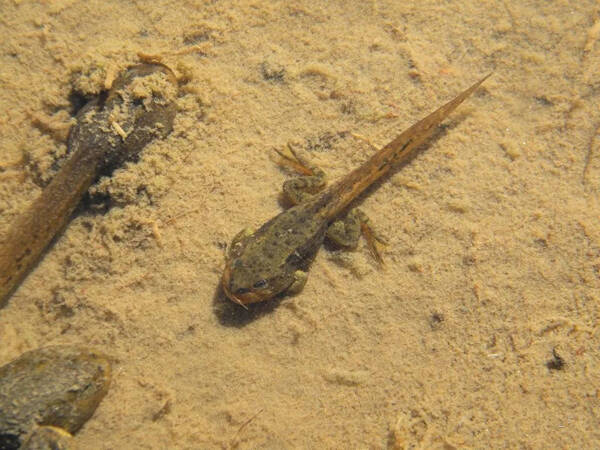
The Columbian spotted frog is listed as Least Concern due to its large range of occurrence, multiple subpopulations and locations, and large population size. Columbian spotted frog populations in western Utah are limited to scarce habitat (springs) and may be threatened by habitat degradation caused by cattle grazing and agricultural activities. Oil and gas exploration is also a growing threat. Water resource development can lower water levels and adversely affect aquatic habitats. Introduced bullfrogs and fish may also have adverse effects, but the current level of threat is unknown. Widespread use of mosquito pesticides poses a potential threat. Columbian spotted frog populations in the Great Basin have been adversely affected by habitat degradation caused by mining, livestock grazing, road construction, agriculture, and direct predation by bullfrogs and non-native fish. Current acidification of the Rocky Mountains is unlikely to threaten it. Global climate change may be a large factor.
Columbian spotted frogs have some protection in several federal and state parks and preserves, although management agencies generally ignore the species. A significant portion of the western Columbian spotted frog's range is managed by the U.S. Bureau of Land Management. Wasatch Columbian spotted frog populations occur primarily on private lands, with some federal ownership along Jordanle Dam and the Provo River. Great Basin Columbian spotted frog populations occur primarily on lands managed by the U.S. Forest Service and the Bureau of Land Management. A recent conservation agreement between the State of Utah and other agencies has significantly reduced the threat level to Columbian spotted frog populations in the Wasatch Front and Western Desert. Conservation activities implemented for the genus Yinhe fish should also benefit the population of the Colombian spotted frog in the western desert.
The IUCN Red List (2015) is listed as: Least Concern (LC).
Protect wildlife and eliminate game.
Maintaining ecological balance is everyone's responsibility!

